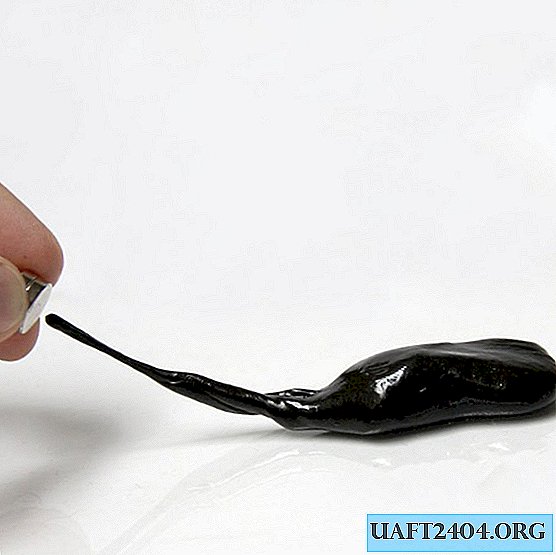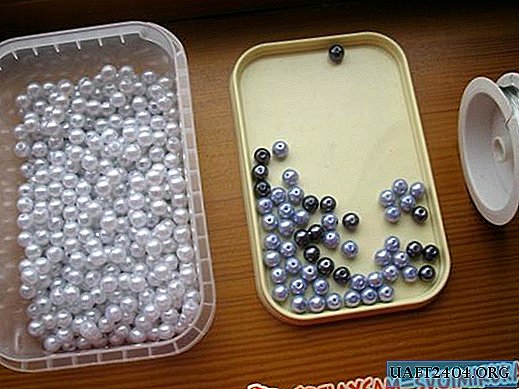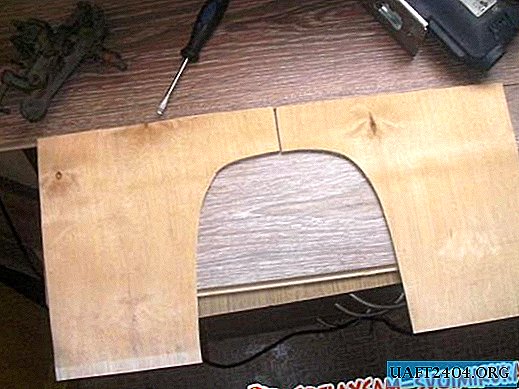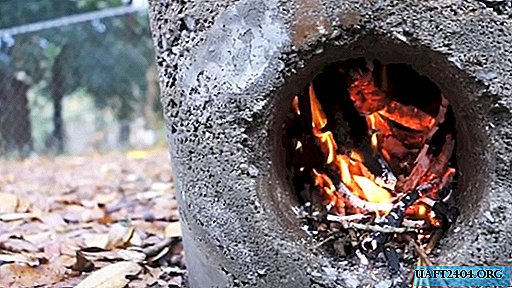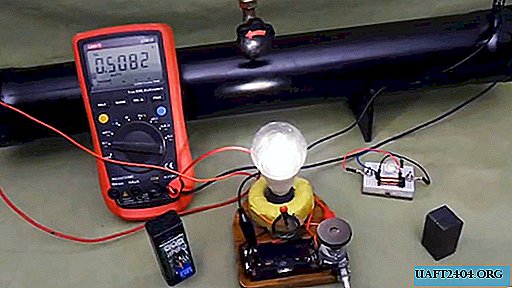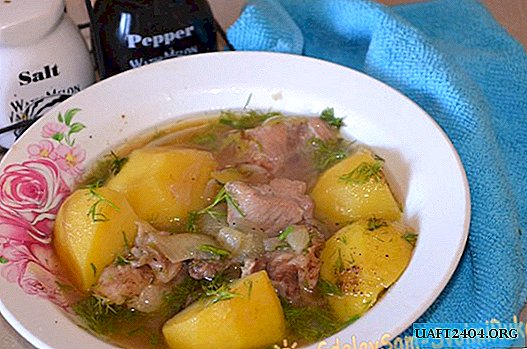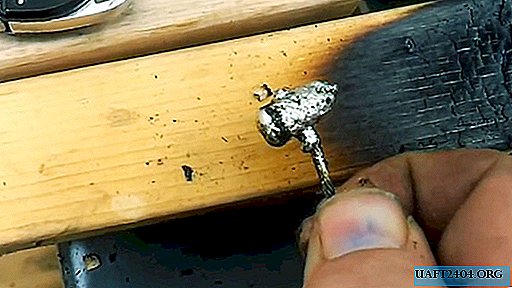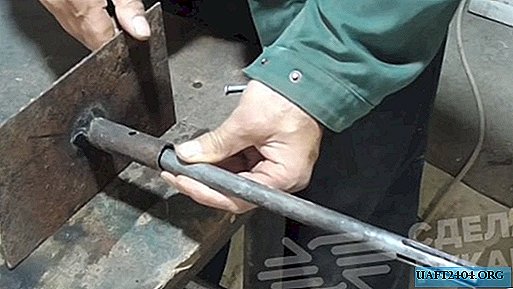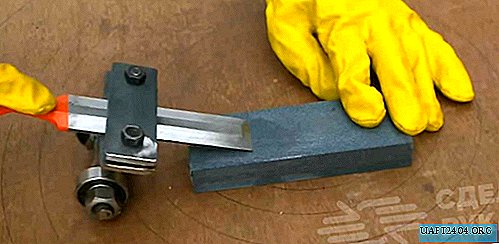Share
Pin
Tweet
Send
Share
Send
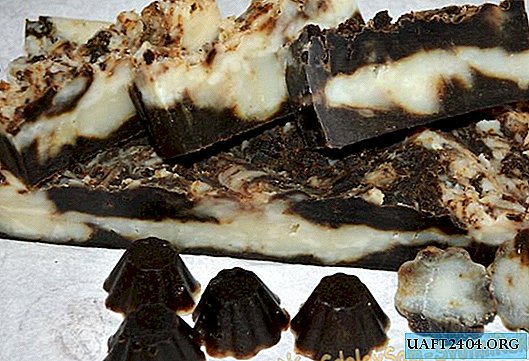
Birch tar has long been famous for its medicinal properties, which are perfectly manifested when using handmade soap, which can help with various skin diseases, heals small cracks, wounds, cuts, nail fungus, acne, irritated skin, pustules on the face and back, age-related acne. And this is not a complete list. Let's make a soap with tar in the form of a chocolate cake in the cold way. Let the aroma not frighten, it is not absorbed by the skin, only gives its useful properties.
Ingredients:
- Refined coconut oil 31% - 385 g.
- Palm oil 40% - 500 g.
- Olive oil 17.5% - 220 g.
- Castor oil 11.5% - 150 g ...
- Tar birch natural 5% - 50 g
- Distilled water.
- Caustic soda.
You will also need:
- Saucepan made of stainless steel or refractory glass for 2-3 liters.
- Capacity for an alkaline solution of 500-600 ml.
- 2 spoons.
- 1 hand blender.
- Form for soap (a square box lined with parchment 20x20cm).
- Thermometer up to 100 degrees.
- Libra.
- Latex gloves for hand protection.
Next, you need to calculate the required amount of sodium hydroxide (caustic soda, alkali) and water in any alkali calculator. Be sure to carefully check all calculations, checking not only the weight of each oil separately, but also the total result. You can take a different amount of the original oils, add available ones or cross out the missing ones. The recipe does not indicate the amount of alkali, because You need to calculate every gram and there should not be errors.
It is important to correctly enter the data in the alkali calculator and carefully weigh the ingredients. Very help in accurately determining the weight of pharmacy scales.
We also add to the calculator the amount of water 33% of the weight of the oils and the “fat to the bath” 7-10% - these are oils that will not be saponified and will remain intact. A lower percentage for oily skin and a larger percentage for dry skin. Further, when all the ingredients are weighed and the calculations are done, we put the pure suspended water in the freezer in a container of refractory glass or stainless steel. Let it cool well and freeze slightly.

At this time, put all the oils, including the fat, in a water bath, stir until all the solid lumps are completely dissolved. The temperature should be within 45 °. You can heat the oil in the microwave or in the oven off.
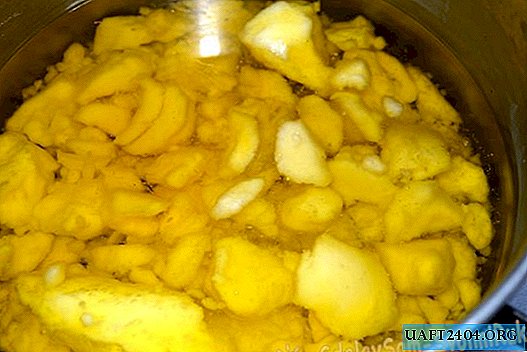
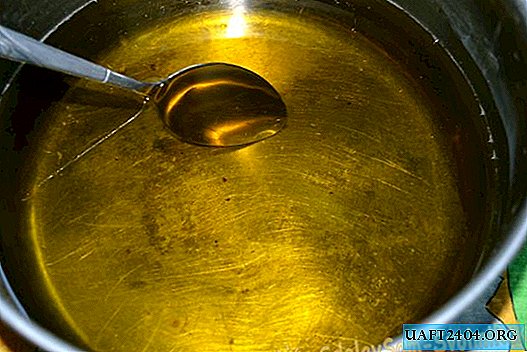
Make sure that the oils do not overheat.
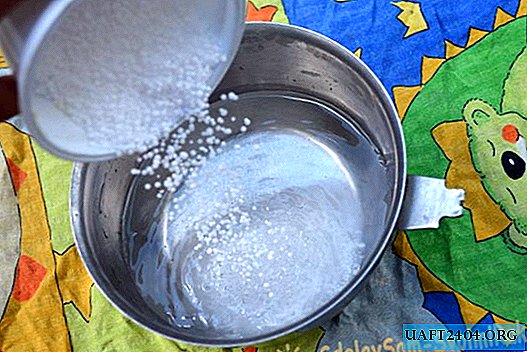
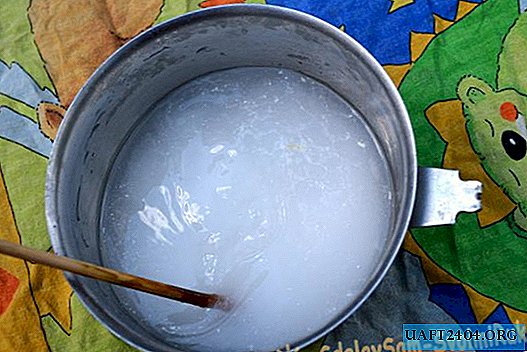
At this time, all the solid oils have melted, we take out water from the freezer, put in a bowl with ice and pour a thin stream of alkali, while continuously stirring with a stainless steel spatula. Mixing is required until all crystals are completely dissolved. At first the solution becomes cloudy, then it becomes transparent. Alkali has the property of heating in water and, if the latter is not cold enough, it will boil, so stock up on ice. It should be cooled to 45 °, approximately the same temperature as the oil.
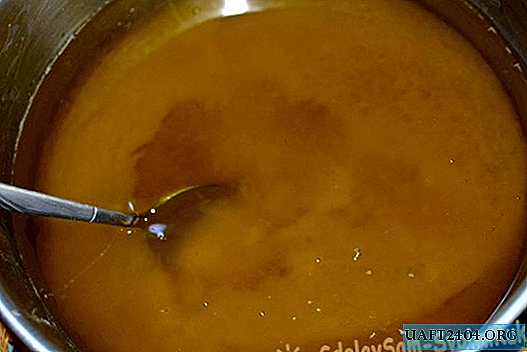
Oils and alkaline solution should be the same temperature, a difference of 4-5 ° is acceptable. We connect.
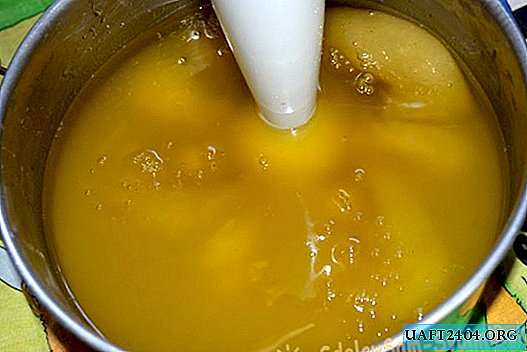
The mixture is mixed with a spoon for a few seconds, then an immersion blender is used. The mixer does not fit, it saturates the mass with air bubbles, which are useless in soap.
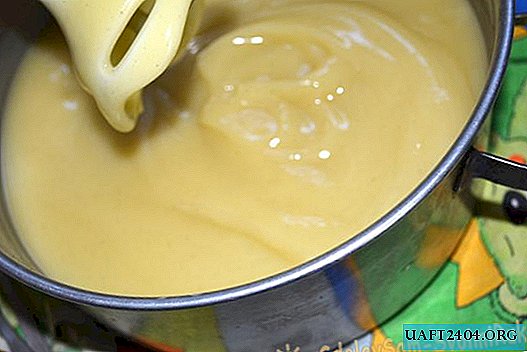
The soapy mass is brought to a state of thick whipped sour cream. If you scoop it with a spoon and put it on top, the mass will not drown, but will hold for some time. This phenomenon in soap making is called the “trace”.
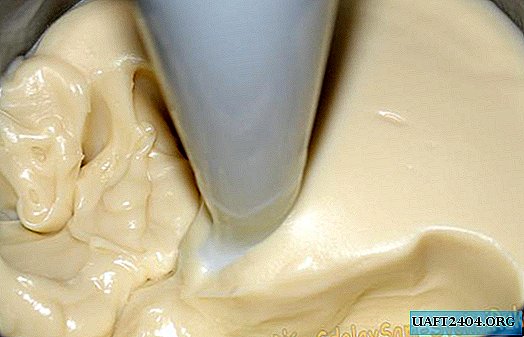
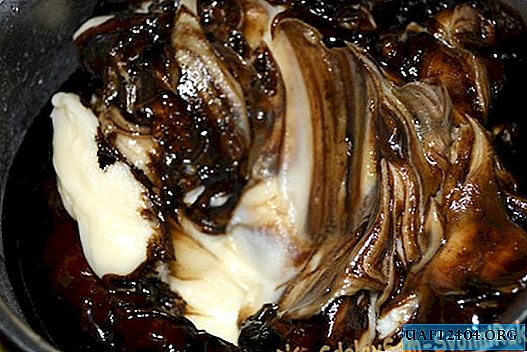
Next, we divide the future soap into 2 parts. We leave one snow-white and add tar to the other.
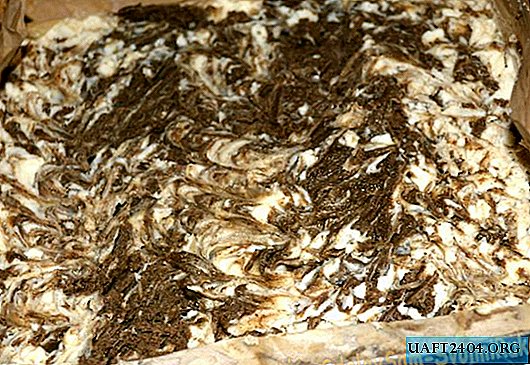
Both masses are laid out in layers in a prepared form. You will have to work quickly, because the white part hardens very quickly and after 5 minutes it will be quite difficult to form. Tap the filled form on the table so that air bubbles come out and the mass penetrates into all corners. From above with a wooden stick, draw arbitrary lines. For beauty.
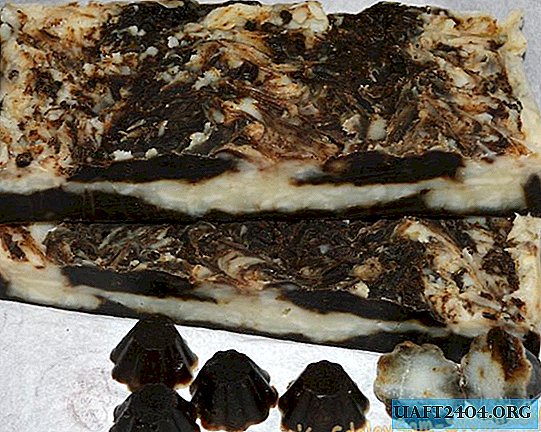
The form should be covered with a film and wrapped in a towel, then put in a warm off oven. Temperature 50 °. Let the soap in this state stand for several hours or night. In the morning, remove, separate from parchment and cut into the necessary pieces. Remember to wear gloves; the cold soap is not ready yet. Wrap in paper and leave to ripen for a month and a half.

Soap is used for various purposes:
- For washing with acne, pimples, lichens, pustules. Mainly for oily and problem skin. For dry skin, be sure to use the cream after cleansing.
- For washing hair.
- Fungal diseases.
- Burns, wounds, cuts, bites of animals and insects.
- Cracks in the heels.
- Pests on plants.
- For bathing domestic dogs and cats.
- Intimate hygiene of women.
- For babies and babies.
If you cannot make tar soap yourself, add a few drops to a bottle of liquid soap or shampoo. Also, as an option, you can use an industrial base for soap or digest children's bars. In any case, you will get an excellent Tar soap, which will help out many times.
Share
Pin
Tweet
Send
Share
Send

